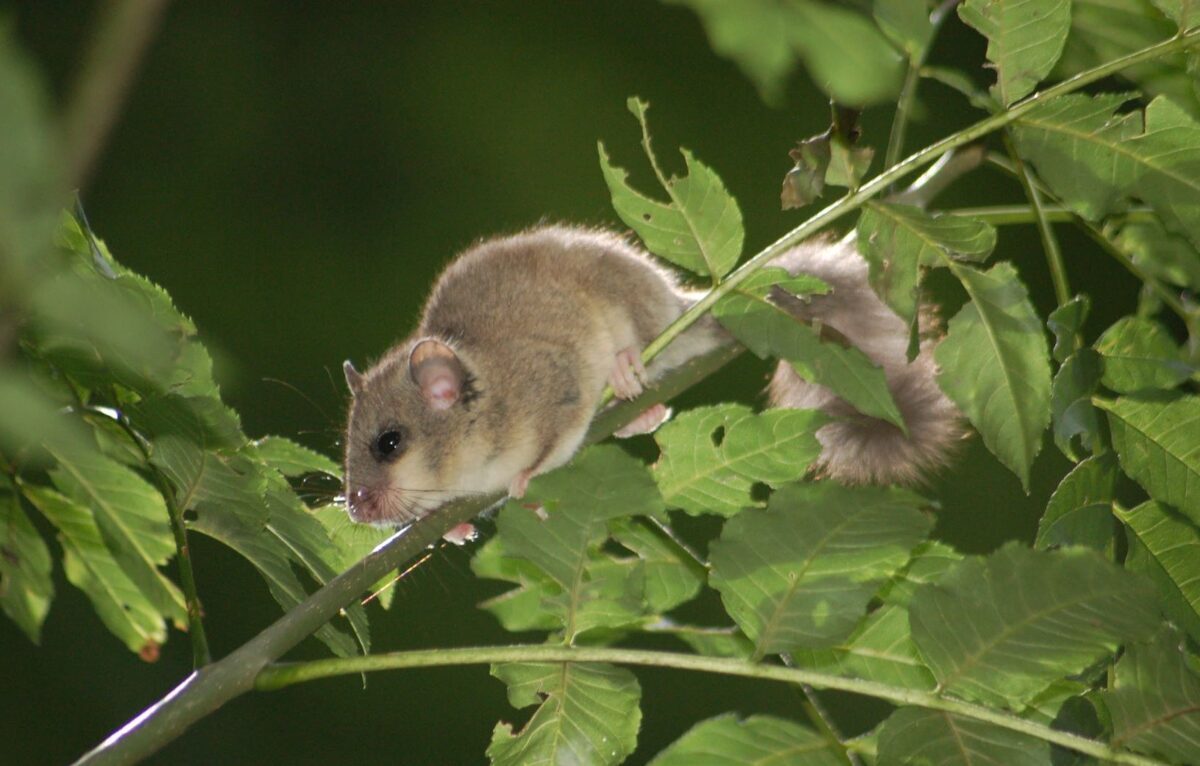Where do they live?
European edible dormouse prefers old broad-leaved forests in river valleys, with many hollow trees. They live in hollow trees, old stumps, burrows dug by another animal or themselves, or well-hidden places in buildings. This grey rodent builds its den from a variety of materials: dry leaves, grass, straw and even paper. In Latvia, edible dormice live in the River Daugava valley near Skrīveri and in the River Gauja valley.
How do they live?
Edible dormice spend most of the year asleep - they go into hibernation relatively early, as early as October, and do not awaken until spring, in May. When active, the dormouse is graceful and agile, moving along tree trunks and branches. It can leap several metres from tree to tree. The dormouse can crawl through gaps as small as two to three centimetres in width.
Soon after spring emergence, the dormouse begins its mating season. Three to four young are born in July or August, and the mother breastfeeds them for about a month. Adult males are solitary. Mothers live with their young until the following spring, when the adult dormice leave to build their own den.
What do they eat?
The diet of the edible dormice consists of plant foods such as various seeds, berries and fruits, nuts, acorns, mushrooms, young shoots, buds, leaves and bark. They also eat various flowers. Occasionally they eat food of animal origin, mainly invertebrates and insects.
Did you know?
- The edible dormouse has a long and bushy tail, which can reach up to 18 cm in length.
- The edible dormouse has excellent eyesight, hearing, as well as sense of smell and touch. To better sense their surroundings, dormice use tactile hairs called vibrissae.
- Dormice are nocturnal - they sleep during the day, and are active at dusk and at night, when they leave their den to forage for food.
- Fruits and berries are mostly eaten for the flesh and seeds, but the skin is left on. The remains of their food can be easily distinguished from those of other rodents.
- In autumn, large quantities of acorns are deposited in the den. There they are slowly eaten by the edible dormouse in a quiet environment.
- Dormice sleep a lot! It's this sleepy nature that gave them their name, which comes from the French word “dormir”, which means to sleep. Edible dormouse spend about 7 months of the year asleep.
- During hibernation, their body temperature drops by almost 30 degrees - to just 4 degrees.
- Edible dormice usually use the same nest box throughout the summer and sometimes for several years in a row. Edible dormice use bird houses or special dormice houses.
- The young are born naked, deaf and blind. When the young are 5 days old, the cochlea of the outer ear unrolls, the auditory canal opens at 12 days, the eyes open at 21 days, the upper teeth appear at 13 days and the lower teeth at 20 days.
- Latvia is home to four of the world's 26 and Europe's five species of dormice: garden, edible (fat), forest and common dormouse.
- The edible dormouse differs from the other three species of dormice (Gliridae) in Latvia by its larger size, less bushy tail and grey fur.
- All dormice species are protected in Latvia and many parts of Europe.
- In Europe, the meat of the great dormouse was once a favourite with gourmets, hence the English name for the species - the edible dormouse. Today, edible dormice are still consumed as a delicacy in Croatia and Slovenia, where they are farmed. Trapping of dormice has also been preserved as a folk tradition.
- The edible dormouse was accidentally introduced to
Britain when several specimens escaped from the private collection of Lionel
Walter Rothschild in 1902. As a result, there is now an established population
of around

